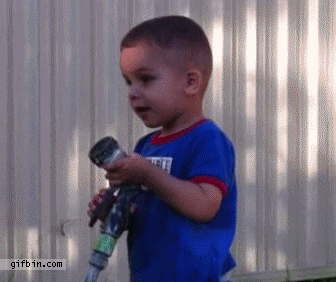I don't make many flannels these days, but when I saw "A Good Day for a Hat" by T. Nat Fuller, illustrated by Rob Hodgson I knew it would be a perfect choice to extend with flannel. I don't have a template to share this time--I just cut everything freehand!
First off, who doesn't love a good hat storytime? So fun. (Head over to EverydayDiversity.com to find some inclusive books to add to your theme!)
For this one, I read the book and did the flannel at the same time. The book follows a simple pattern--Mr. Brown goes outside, but the hat he's wearing isn't right for the occasion.
And the page turn reveals the next dilemma. So I have everyone chorus, "I have just the hat for that" while putting their finger up like they have an idea. Then I lower the book and put on the new hat. This allowed a natural place to add discussion. I would say things like, "And he put on a yellow rain hat! What else do you wear in the rain?"
I didn't ask extra questions on every spread, but it still encouraged dialogic reading as kids saw the additional elements in the pictures and pointed them out, "He needs a trumpet!" called out one little storytimer when we got to the marching band spread.
At the end, everyone loved it when he wore all the hats at once. After Mr. Brown is surprised, I tumbled all the hats to the floor--always a crowd pleaser. I love this flannel!
Flannel Friday is hosted this week by Jessica of Storytime in the Stacks. You can find out more about Flannel Friday, including archives, Pinterest boards, and a Facebook group over at the Flannel Friday website.
First off, who doesn't love a good hat storytime? So fun. (Head over to EverydayDiversity.com to find some inclusive books to add to your theme!)
For this one, I read the book and did the flannel at the same time. The book follows a simple pattern--Mr. Brown goes outside, but the hat he's wearing isn't right for the occasion.
"I have just the hat for that" Mr. Brown said.
But when he stepped outside...
...it was raining!
And the page turn reveals the next dilemma. So I have everyone chorus, "I have just the hat for that" while putting their finger up like they have an idea. Then I lower the book and put on the new hat. This allowed a natural place to add discussion. I would say things like, "And he put on a yellow rain hat! What else do you wear in the rain?"
I didn't ask extra questions on every spread, but it still encouraged dialogic reading as kids saw the additional elements in the pictures and pointed them out, "He needs a trumpet!" called out one little storytimer when we got to the marching band spread.
At the end, everyone loved it when he wore all the hats at once. After Mr. Brown is surprised, I tumbled all the hats to the floor--always a crowd pleaser. I love this flannel!
Flannel Friday is hosted this week by Jessica of Storytime in the Stacks. You can find out more about Flannel Friday, including archives, Pinterest boards, and a Facebook group over at the Flannel Friday website.






